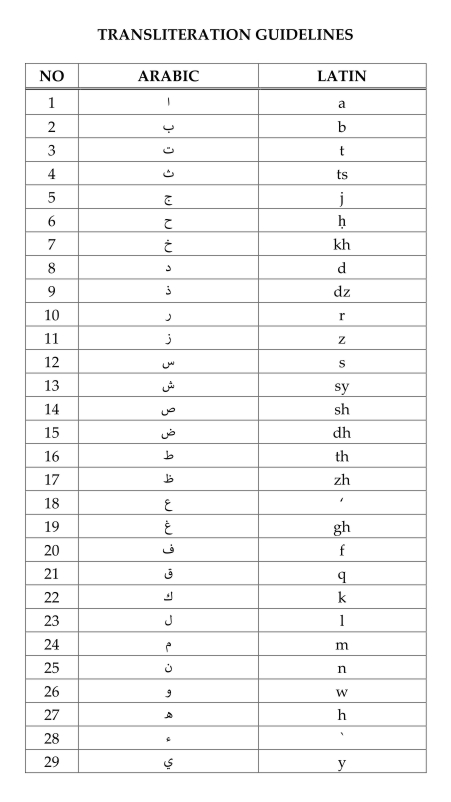ABOUT JOURNAL
JOURNAL POLICIES
SUBMISSION
AUTHOR GUIDELINES
Submitted article must be in line with:
Footnote:
When a source is cited for the first time, full information is provided: full name(s) of an author(s), the title of the source in italic, and write into brackets place of publication, publishing company, and date of publication, and then the precise page that is cited.
For the following citations of the same source, list the full name(s) of author(s), two or three words of the title, three full stops and comma, and then the specific page number(s). The word ibid., may be used, but op.cit., and loc.cit. are not.
A. Book:
B. Chapter in a book or journal:
C. Book with multi-authors:
D. Translated book:
E. Master’s thesis or doctoral dissertation:
F. Daily newspaper:
G. Bibliography
Transliteration Guidelines Arabic Romanization in Tsaqafah refers to the transliteration system of Library of Congress (LC) combined with the model of Department of Religious Affairs of Indonesia which based on Joint Decree Letter between Ministry of Religious Affairs and Ministry of Education and Cultural.
 
The transliteration model of Library of Congress (LC) and Department of Religious Affairs of Indonesia for madd and diphthongs:
Examples:
Comparative Studies of Sharia Law
The author whose published manuscript approved the following provisions:
The names and email addresses entered in this journal site will be used exclusively for the stated purposes of this journal and will not be made available for any other purpose or to any other party.
ABOUT JOURNAL
JOURNAL POLICIES
SUBMISSION
Screening For Plagiarism


JOURNAL OF INDONESIAN COMPARATIVE OF SYARIAH LAW © 2018 by Author is licensed under CC BY 4.0
Layanan Aduan & Pengembangan:
Email: jurnalcomparativeofsharialaw@unida.gontor.ac.id
wa: wa.me/6285230307911
